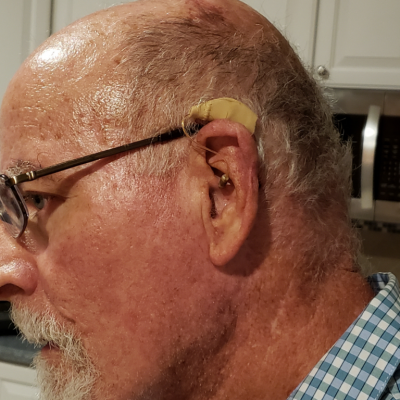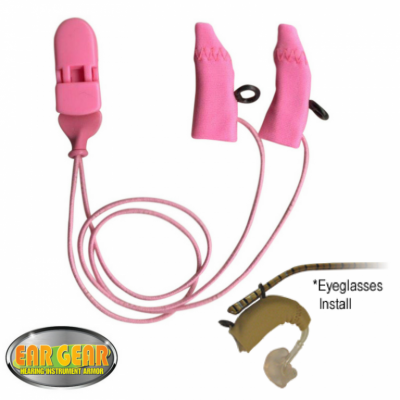
What do you do if you wear a hearing aid or implant and you’re a normal human being who sweats? Here’s everything you need to know about hearing aids and sweating and how you can enjoy the activities you love while protecting your vital (and expensive) hearing device.
Things that Make You Sweat…
Gardening or golfing in 90-degree heat, that dream vacation in the Bahamas, your 16-year old grandson borrowing your car… There are a lot of things that can make you sweat. Having to replace a damaged hearing aid is another one. If you’re like many people who wear a hearing assistance device, you might have asked the question: Can you wear a hearing aid if you sweat? The answer is – Yes! As long as you protect your device. And you should protect it because the truth is, sweat can damage your device.
How can sweat damage your hearing aid?
Sweat can pose several risks to the functionality and longevity of hearing aids. To begin, the components of hearing aids, such as the microphones, speakers, and circuitry, are susceptible to corrosion and oxidation when exposed to sweat. The salts and minerals present in sweat can gradually erode the delicate internal components, leading to performance issues and potential malfunctions.
Moreover, sweat can cause moisture accumulation within the hearing aid, especially in humid environments or during vigorous physical activities. Excessive moisture can seep into your device, affecting the electrical connections and potentially causing short circuits. This moisture build-up not only compromises the overall performance of the hearing aid but also increases the risk of internal damage.
Additionally, sweat can impact the battery life of your hearing aid or implant. If moisture seeps into the battery compartment, it can cause corrosion or create a short circuit, draining the battery quickly. Reduced battery life can be a major inconvenience, necessitating more frequent battery replacements or recharging.
So, it’s important to take precautions to protect your hearing aid from sweat to minimize the risk of these damaging effects.
Tips to Protect Your Hearing Aid from Sweat
Fortunately, there are some cost-effective solutions that make it easy to protect your hearing device from sweat:
-
Use sweat-resistant hearing aid covers or sleeves.
Using a simple hearing aid accessory that’s designed as a cover or sleeve for our device can work as a shield that keeps moisture from getting to your device. These accessories are sometimes referred to as “sweatbands” for hearing aids.
Ear Gear is the leading provider of these types of hearing aid accessories, which are designed solely to protect hearing devices from sweat, moisture, dirt, and wind without sacrificing comfort or sound quality. Equipped with cords or other special attachments, they can seamlessly clip to your clothing or glasses, offering the added benefit of protecting your device from getting lost. You can learn more about Ear Gear hearing aid protectors here.
-
Be in the habit of cleaning your device daily.
In addition to using a hearing aid protector, daily cleaning of your device can protect it from sweat damage. Regular cleaning can remove sweat residue and prevent the build-up of salt and other damaging substances.
You can use a soft, dry cloth or a specialized hearing aid cleaning brush to gently wipe the external surfaces of the device, including the microphone and speaker openings. By keeping your hearing aid clean and free from sweat residue, you can help maintain its optimal performance and prolong its lifespan.
-
Use a drying kit or dehumidifier.
Using a drying kit or dehumidifier is also helpful for protecting your hearing aid or implant from sweat damage. These devices are designed to remove moisture and humidity, which can help prevent the build-up of moisture inside the hearing aid caused by sweat. This can also reduce the risk of corrosion, oxidation, and electrical malfunctions.
-
Consider device water resistance ratings.
Of course, different devices have varying levels of moisture resistance. So, if you’re looking for a new device, understanding the Ingress Protection (IP) rating, which measures how well the device keeps out water, debris, and foreign substances, will be important in your decision-making. Your audiologist can guide you on this.
Sometimes the least expensive solution – protecting your device with a simple hearing aid sleeve or cover – is the best way to go!
Summary
In conclusion, just because you wear a hearing aid doesn’t mean you need to sit inside all day with the air conditioner on! Regularly cleaning and drying your device and utilizing a simple hearing aid cover can give you the freedom to work up a sweat to your heart’s content.





